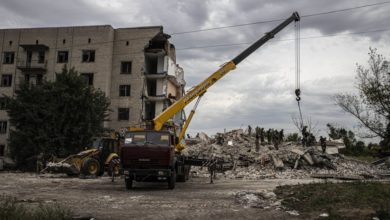Nearly Everyone in the World is Breathing Polluted Air

(GENEVA, Switzerland) — The U.N. health agency says nearly everybody in the world breathes air that doesn’t meet its standards for air quality, calling for more action to reduce fossil-fuel use, which generates pollutants that cause respiratory and blood-flow problems and lead to millions of preventable deaths each year.
The World Health Organization, about six months after tightening its guidelines on air quality, on Monday issued an update to its database on air quality that draws on information from a growing number of cities, towns, and villages across the globe — now totaling over 6,000 municipalities.
WHO reported that 99 percent of the world’s population inhale air which exceeds the air quality limits. The air is usually contaminated with harmful particles, such as those that penetrate the lungs and enter veins and arteries and can lead to disease. Air quality is poorest in WHO’s Eastern Mediterranean and Southeast Asia regions, followed by Africa, it said.
“After surviving a pandemic, it is unacceptable to still have 7 million preventable deaths and countless preventable lost years of good health due to air pollution,” said Dr. Maria Neira, head of WHO’s department of environment, climate change and health. “Yet too many investments are still being sunk into a polluted environment rather than in clean, healthy air.”
Ground measurements of nitrogen dioxide have been added to the database’s existing two types of particulate matter, PM2.5 and pm10. 2018 was the year of publication for the final version.
The main source of nitrogen dioxide is human-generated fuel burning, like in automobile traffic. It’s most prevalent in urban areas. According to WHO, exposure can cause respiratory diseases like asthma, symptoms such as wheezing, difficulty breathing and coughing. Concentrations were highest in the Eastern Mediterranean Region.
Particulate matter has many sources, such as transportation, power plants, agriculture, the burning of waste and industry – as well as from natural sources like desert dust. The database revealed that the developing world was particularly affected: India showed high levels PM10 and China had high PM2.5.
“Particulate matter, especially PM2.5, is capable of penetrating deep into the lungs and entering the bloodstream, causing cardiovascular, cerebrovascular (stroke) and respiratory impacts,” WHO said. “There is emerging evidence that particulate matter impacts other organs and causes other diseases as well.”
Anumita Rajchowdhury from Center for Science and Environment (New Delhi), said that the findings are a reminder of how important it is to make changes in order to reduce air pollution.
India and the entire world should prepare for big changes to combat air pollution. This includes electric vehicles and shifting away fossil fuels.
The Council on Energy, Environment and Water, a New Delhi-based think tank, found in a study that more than 60% of India’s PM2.5 loads are from households and industries.
Tanushree Ganguly, who heads the council’s program on air quality, called for action toward reducing emissions from industries, automobiles, biomass burning, and domestic energy.
“We need to prioritize clean energy access for households that need it the most, and take active measures to clean up our industrial sector,” she said.
Read More From Time





